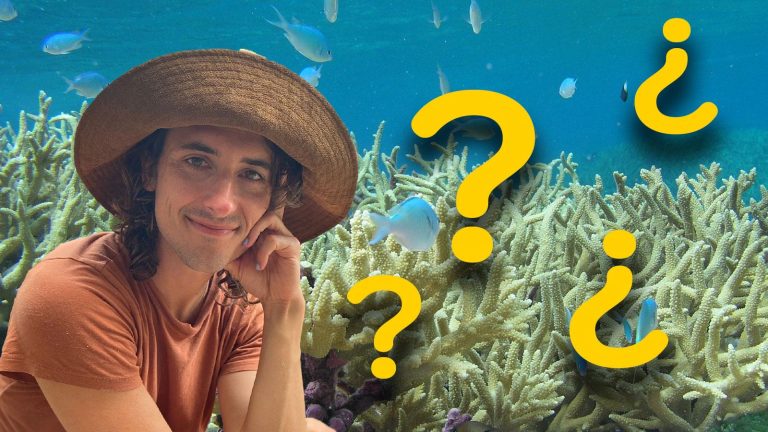A reader asked us:
What are the consequences of climate change for Mexico? I would like to know what types of animals, species or plants are becoming extinct in Mexico in recent years.
We enlisted the help of YCC contributor Tree Meinch from La Paz, Mexico, to answer this question. Here's what they found:
In the field of species conservation, “extinction” is a difficult term to define.
First of all, how do you know when a particular species has officially disappeared from our planet? To say this with confidence, you have to look at a lot of things, both literally and figuratively.
In the most common cases, we know that a species is declining, and a network of scientific disciplines must assess the contributing factors. Typically, there are many factors, including climate change.
Corals have become one of the most iconic indicators of ocean climate change due to the strong link between rapid ocean warming and major bleaching events that cause mass die-offs. We recently learned that the ocean is warming twice as fast as it did 20 years ago.
This rapid change poses a major obstacle to even the most adaptable plants and animals.
“The problem with climate change and other human activities is that animals don't change fast enough. They need hundreds or thousands of years to adapt.
In the case of Acropora, it is now listed as critically endangered in Mexico. This is based on the 2021 Comprehensive Assessment, which extrapolates that the population has declined by more than 80% in just 30 years.
The rate of today's environmental changes caused by human activities has led to what many scientists call Earth's sixth mass extinction.
This sobering reality influenced Ceballos’ latest co-authored book, “Before They Disappear,” published this fall by Johns Hopkins University.
According to a 2019 study, the threat of climate change affects Mexico particularly hard because Mexico is known as a “biodiversity powerhouse” and is home to nearly 10% of the world's biodiversity.
When we talk about species extinction and endangerment, the leading global authority is the International Union for Conservation of Nature, commonly known as IUCN. The organization maintains a Red List of threatened species, which includes categories such as “near threatened,” “critically endangered” and “extinct” before “extinct in the wild.”
The final designation usually comes at the end of a series of questions, investigations and escalating concerns.
With this in mind, nearly 50 species in Mexico are now officially designated as “possibly extinct,” according to federal databases. These include St. Quentin's kangaroos, several species of warblers, Caribbean monk seals, and even grizzly bears.
Ultimately, Ceballos said, in the conservation field, focusing on total extinction can be distracting and costly.
“If we only focus on extinction, we're missing the point,” Ceballos said. “The concern now is the rate at which individuals are disappearing and the rate at which populations are declining.”
The Red List lists nearly 500 species in Mexico as “critically endangered” and less than 30 species are extinct.
In 2020, a groundbreaking study involving the International Union for Conservation of Nature (IUCN) revealed that more than one-third of Mexico's freshwater fish species are threatened with extinction.
Ceballos can list the large megafauna that have completely or partially disappeared from Mexico at some point in the past 100 years. These include gray wolves, grizzly bears, bison and elk, although some of these animals have been reintroduced to parts of Mexico from other groups around the world.
To be clear, many of the aforementioned population disappearances are linked to overhunting or poaching, deforestation, and in some cases mass poisoning, and even in the case of the Mexican gray wolf were strategically organized by U.S. government officials . Factors such as habitat loss often involve climate change or other human development and land modification.
Even so, climate has been, and will continue to be, an ongoing factor influencing species behavior and success. We also know that regional temperature changes, droughts, unpredictable extreme weather events and habitat loss are increasing.
Quantifying the impact of climate change on species decline is a complex matter that goes beyond demography. Experts in the fields of biology, ecology and oceanography are working on the search, examining indicators such as sudden changes in migration and declines in species sightings.
When trying to link climate variables to impacts on species, research costs and the vast number of variables make progress slow and painful.
Elva Escobar Briones, an oceanographer and expert in deep-sea diversity and conservation in Mexico, said the situation in marine ecosystems is becoming increasingly challenging and costly.
“The effects of noise pollution, plastic pollution, or dissolved compounds from human activities are poorly documented,” Escobar Briones said.
The same goes for our understanding of beach erosion and its impact on sea turtles, or the complex consequences of ocean acidification and thermal stratification on marine life. We know that rising sea temperatures will affect many things, but the details are confusing and depend on the circumstances.
The disappearance of the vaquita, a small, cartoonish porpoise endemic to the upper Gulf of California, is one of the most recognized instant extinction events. However, in this case, dangerous gillnets and illegal fishing practices have been the main threats to these creatures.
Beyond fisheries, Mexico's biodiversity is closely tied to booming tourism, agricultural operations and other human forces that have knock-on effects.
“If we continue down this path, we will lose many species,” Ceballos explained. “And it hasn't affected plants and animals on a large scale.”
In a glimmer of hope, state officials have reintroduced bison into parts of Mexico in recent years. Its return could help combat climate change, as it is considered a species that supports the entire chain of flora and fauna within its ecosystem.
This reintroduction effort demonstrates how keystone species can rapidly improve habitat diversity and improve lives, amidst the many growing challenges we face in a rapidly changing world.
